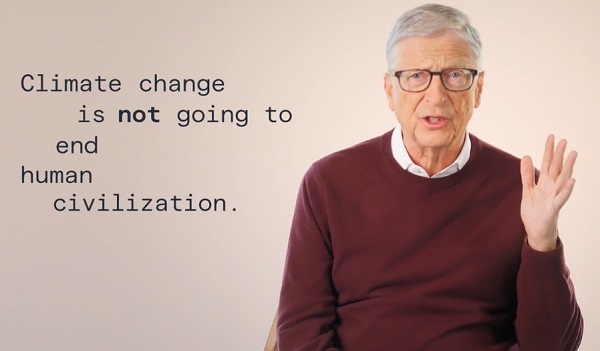Alberta
1 Police Force. 6 Stories of Heroism. 17 Awards for Bravery

From RCMP “K” Division
RCMP Commissioner presents 17 Bravery Awards in Edmonton
RCMP Commissioner Brenda Lucki joined Deputy Commissioner Curtis Zablocki, Commanding Officer of the Alberta RCMP, in the presentation of Commendations for Bravery to 17 recipients in private ceremony at “K” Division Headquarters.
“Everyone being honoured here today has placed the safety of others above their own,” said Commissioner Brenda Lucki. “I hope everyone leaves this ceremony knowing that they have made a difference in the RCMP, in their communities, and in the country.”
The award recognizes Regular Members and civilians who have demonstrated outstanding courage in the face of dangerous circumstances beyond those commonly encountered in routine police work and which pose an imminent threat of personal injury or death.
“This ceremony gives us the privilege to bring these amazing stories of bravery, resilience and courage out of the shadows,” said Deputy Commissioner Zablocki, Commanding Officer of the Alberta RCMP. “These are the stories that need to be heard so that we can express our gratitude and give our heroes the recognition they deserve.”
The names of the recipients and the circumstances that resulted in their awards are provided below.
Auxiliary Constable Rtd. Derek Bond and Constable Rtd. David Wynn (posthumous)
On Jan. 17, 2015, Constable David Wynn and Auxiliary Constable Derek Bond were involved in a confrontation with an armed suspect in St. Albert, Alta. During the encounter, the suspect fired upon and struck Auxiliary Constable Bond in the arm and torso. Constable Wynn, aware of the danger, continued to advance and engaged with the suspect. The suspect was able to fire his weapon again, striking Constable Wynn, who subsequently passed away due to his injuries.
Corporal Rtd. Pascal Richard, Mr. Fragoso (posthumous), Mr. Sabbah and Mr. Lines
On June 30, 2014, a drunk driver crossed into oncoming traffic near Mallaig, Alta., striking a travel trailer before hitting a vehicle driven by Mr. Fragoso. The vehicle was forced into the ditch where it caught fire. Off-duty Corporal Richard, with the assistance of Mr. Sabbah and Mr. Lines, braved the fire engulfed-vehicle and made continuous attempts to rescue the two adults trapped in the front seat. Mr. Fragoso assisted the rescuers by using the fire extinguisher provided to him and attempted to clear the flames on his partner, and his daughter, first. As a result of Mr. Fragoso’s selfless actions, the rescuers were able to extricate his daughter from the back seat. Sadly, Mr. Fragoso and his partner, Ms. Patterson, passed away.
Constable Brandon Goudey and Constable Timothy Stevens
On Oct. 1, 2016, Constables Goudey and Stevens rescued a distressed man who was in danger of drowning in the Peace River, in Peace River, Alta. The members, along with several colleagues, responded to a request for assistance from the Peace River paramedics and fire department of an adult male who had fallen into the swift-moving current at an unknown point. The two members entered the freezing water, but were deterred by the current. A second attempt was made by the members, swimming 30 feet out and successfully brought the man back to shore.
 Constable Kyle Aucoin and Constable Jeffery Czarnecki
Constable Kyle Aucoin and Constable Jeffery Czarnecki
On June 16, 2016, Constables Aucoin and Czarnecki responded to a domestic dispute in Spruce Grove, Alta. While interviewing the victim outside the trailer home, the constables saw thick, black smoke coming out of the residence’s front windows. Knowing the suspect was still inside, the members raced to the front door and attempted to kick it down. After finally gaining entrance, Constables Aucoin and Czarnecki crawled on their hands and knees through the dense smoke until they located the unconscious suspect. They were able to drag the man outside where he was revived.
Constable Dan Wakelin
Between May 14 and 15, 2011, the town of Slave Lake was subject to wildfires which caused catastrophic losses and forced the complete evacuation of nearly 7,000 residents. Constable Wakelin arrived with the first response team and maintained his post at the checkpoint through the fire, despite not having protective equipment.
Corporal David Brosinsky, Constable Nicholas Crowther, Inspector Jeremie Landry, Corporal Travis Ogilvie and Constable Adam Rayner
On Jan. 6, 2014, members from Vegreville, Tofield and Two Hills Detachments received information of a man who was wanted on several warrants, was in possession of a handgun and had threatened to kill an individual. Corporal Ogilvie placed himself in danger to assist with the arrest and was subsequently ejected and run over by the truck driven by the male suspect. Inspector Landry, Corporal Brosinsky, Constable Crowther and Constable Rayner all braved multiple rounds of exchange of gunfire with the suspect in an attempt to make the arrest and remove Corporal Ogilive from the scene to safety. The male suspect was contained in his vehicle until the Emergency Response Team arrived and made the arrest.
Alberta
Canada’s heavy oil finds new fans as global demand rises
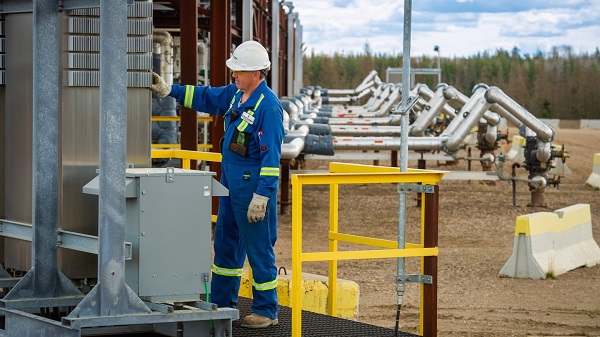
From the Canadian Energy Centre
By Will Gibson
“The refining industry wants heavy oil. We are actually in a shortage of heavy oil globally right now, and you can see that in the prices”
Once priced at a steep discount to its lighter, sweeter counterparts, Canadian oil has earned growing admiration—and market share—among new customers in Asia.
Canada’s oil exports are primarily “heavy” oil from the Alberta oil sands, compared to oil from more conventional “light” plays like the Permian Basin in the U.S.
One way to think of it is that heavy oil is thick and does not flow easily, while light oil is thin and flows freely, like fudge compared to apple juice.
“The refining industry wants heavy oil. We are actually in a shortage of heavy oil globally right now, and you can see that in the prices,” said Susan Bell, senior vice-president of downstream research with Rystad Energy.
A narrowing price gap
Alberta’s heavy oil producers generally receive a lower price than light oil producers, partly a result of different crude quality but mainly because of the cost of transportation, according to S&P Global.
The “differential” between Western Canadian Select (WCS) and West Texas Intermediate (WTI) blew out to nearly US$50 per barrel in 2018 because of pipeline bottlenecks, forcing Alberta to step in and cut production.
So far this year, the differential has narrowed to as little as US$10 per barrel, averaging around US$12, according to GLJ Petroleum Consultants.
“The differential between WCS and WTI is the narrowest I’ve seen in three decades working in the industry,” Bell said.
Trans Mountain Expansion opens the door to Asia

Oil tanker docked at the Westridge Marine Terminal in Burnaby, B.C. Photo courtesy Trans Mountain Corporation
The price boost is thanks to the Trans Mountain expansion, which opened a new gateway to Asia in May 2024 by nearly tripling the pipeline’s capacity.
This helps fill the supply void left by other major regions that export heavy oil – Venezuela and Mexico – where production is declining or unsteady.
Canadian oil exports outside the United States reached a record 525,000 barrels per day in July 2025, the latest month of data available from the Canada Energy Regulator.
China leads Asian buyers since the expansion went into service, along with Japan, Brunei and Singapore, Bloomberg reports. 
Asian refineries see opportunity in heavy oil
“What we are seeing now is a lot of refineries in the Asian market have been exposed long enough to WCS and now are comfortable with taking on regular shipments,” Bell said.
Kevin Birn, chief analyst for Canadian oil markets at S&P Global, said rising demand for heavier crude in Asia comes from refineries expanding capacity to process it and capture more value from lower-cost feedstocks.
“They’ve invested in capital improvements on the front end to convert heavier oils into more valuable refined products,” said Birn, who also heads S&P’s Center of Emissions Excellence.
Refiners in the U.S. Gulf Coast and Midwest made similar investments over the past 40 years to capitalize on supply from Latin America and the oil sands, he said.
While oil sands output has grown, supplies from Latin America have declined.
Mexico’s state oil company, Pemex, reports it produced roughly 1.6 million barrels per day in the second quarter of 2025, a steep drop from 2.3 million in 2015 and 2.6 million in 2010.
Meanwhile, Venezuela’s oil production, which was nearly 2.9 million barrels per day in 2010, was just 965,000 barrels per day this September, according to OPEC.
The case for more Canadian pipelines

Worker at an oil sands SAGD processing facility in northern Alberta. Photo courtesy Strathcona Resources
“The growth in heavy demand, and decline of other sources of heavy supply has contributed to a tighter market for heavy oil and narrower spreads,” Birn said.
Even the International Energy Agency, known for its bearish projections of future oil demand, sees rising global use of extra-heavy oil through 2050.
The chief impediments to Canada building new pipelines to meet the demand are political rather than market-based, said both Bell and Birn.
“There is absolutely a business case for a second pipeline to tidewater,” Bell said.
“The challenge is other hurdles limiting the growth in the industry, including legislation such as the tanker ban or the oil and gas emissions cap.”
A strategic choice for Canada
Because Alberta’s oil sands will continue a steady, reliable and low-cost supply of heavy oil into the future, Birn said policymakers and Canadians have options.
“Canada needs to ask itself whether to continue to expand pipeline capacity south to the United States or to access global markets itself, which would bring more competition for its products.”
Alberta
From Underdog to Top Broodmare

WATCH From Underdog to Top Broodmare (video)
Executive Producers Jeff Robillard (Horse Racing Alberta) and Mike Little (Shinelight Entertainment)
What began as an underdog story became a legacy of excellence. Crackers Hot Shot didn’t just race — she paved the way for future generations, and in doing so became one of the most influential producers the province has known.
The extraordinary journey of Crackers Hot Shot — once overlooked, now revered — stands as one of Alberta’s finest success stories in harness racing and breeding.
Born in humble circumstances and initially considered rough around the edges, Crackers Hot Shot overcame long odds to carve out a career that would forever impact the province’s racing industry. From a “wild, unhandled filly” to Alberta’s “Horse of the Year” in 2013, to producing foals who carry her spirit and fortitude into future generations.
Her influence ripples through Alberta’s racing and breeding landscape: from how young stock are prepared, to the aspirations of local breeders who now look to “the mare that did it” as proof that world-class talent can emerge from Alberta’s paddocks.
“Crackers Hot Shot, she had a tough start. She wasn’t much to look at when we first got her” — Rod Starkewski
“Crackers Hot Shot was left on her own – Carl Archibald heard us talking, he said ‘I’ll go get her – I live by there’. I think it took him 3 days to dig her out of the snow. She was completely wild – then we just started working on her. She really needed some humans to work with her – and get to know that people are not scary.” — Jackie Starkewski
“Crackers Hot Shot would be one of the top broodmares in Albeta percentage wise if nothing else. Her foals hit the track – they’re looking for the winners circle every time.” — Connie Kolthammer
Visit thehorses.com to learn more about Alberta’s Horse Racing industry.
-
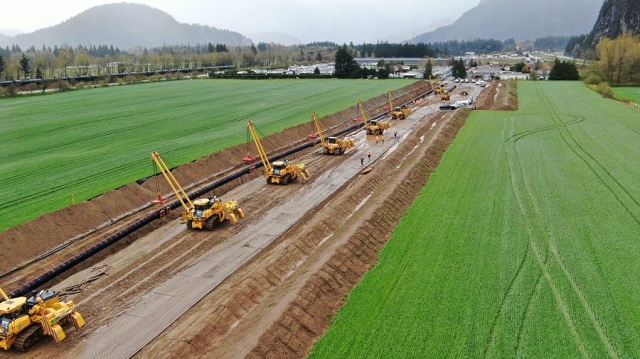
 Business1 day ago
Business1 day agoTrans Mountain executive says it’s time to fix the system, expand access, and think like a nation builder
-

 International1 day ago
International1 day agoBiden’s Autopen Orders declared “null and void”
-

 MAiD1 day ago
MAiD1 day agoStudy promotes liver transplants from Canadian euthanasia victims
-
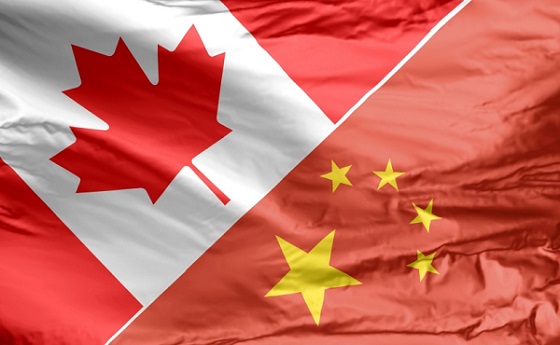
 Business1 day ago
Business1 day agoCanada has given $109 million to Communist China for ‘sustainable development’ since 2015
-
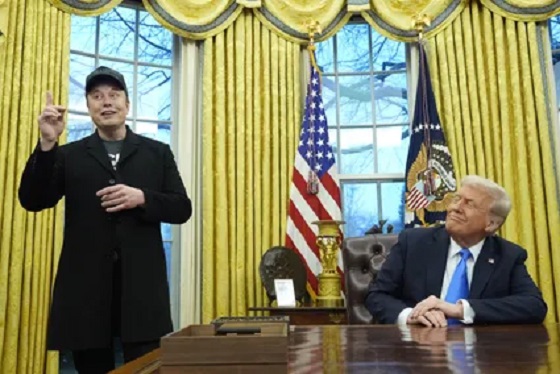
 Internet2 days ago
Internet2 days agoMusk launches Grokipedia to break Wikipedia’s information monopoly
-

 Business1 day ago
Business1 day agoCanada’s combative trade tactics are backfiring
-

 Automotive1 day ago
Automotive1 day agoCarney’s Budget Risks Another Costly EV Bet
-
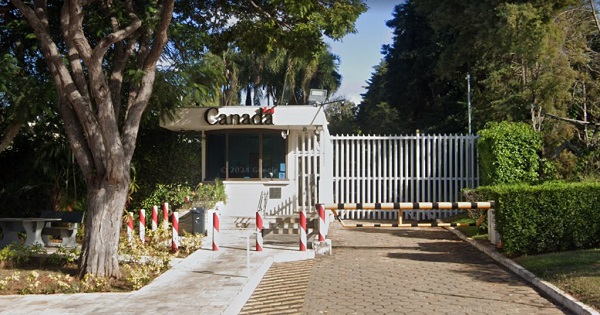
 Business1 day ago
Business1 day agoYou Won’t Believe What Canada’s Embassy in Brazil Has Been Up To




